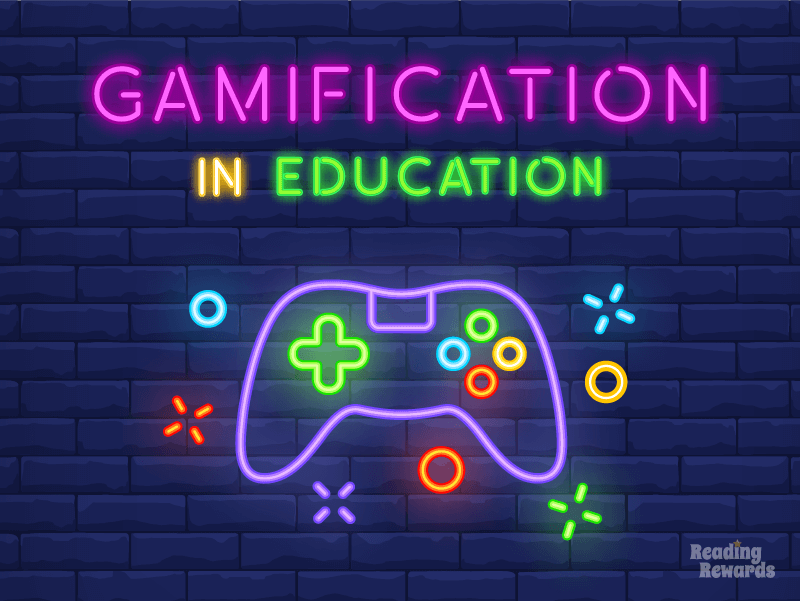[GUEST POST] Gamification in Education

Shrivathsav Hemanthkumar Gomathy
Guest Writer (TJC)
Disclaimer: Guest posts represent the diversity of opinion within the world of gamification, and the views and opinions expressed in guest articles are those of the author.
Introduction
Gamification in education has been used for many years now to increase the efficiency, motivation, and knowledge retention of students worldwide.
Most students hate to study, and often turn to gaming as an alternative method to spend their time. To help with this, there is a tactic that involves the intertwining of gaming — or gamified elements — with educational components.
By incorporating elements from these kinds of games into their studies, in theory, the goal of motivating students to study can be achieved. When applied, however, the results have so far been varied.
In this article, we will discuss the implementation of gamification into the education system, and how it has impacted us in the modern world.

How has Gamification been implemented in education?
It may not seem like there are any gamified elements in your classroom, but they’re just hidden in plain sight — there are actually many gamified aspects already present in the ordinary classroom.

Let’s take the element of competition within the classroom as an example. Classrooms are extremely competitive places, and the competitiveness is only amplified at higher levels of academics. This itself is a gamification tactic, used to increase the maximum output of students.
According to Resilient Educator, when students are pitted against each other, it acts as an external drive, motivating them to perform at levels higher than what they would normally carry out.
Another example in which gamification can be found in the classroom is the presence of rewards and incentives.
Everyone has seen their fair share of rewards. When a student is the best in a subject, they get a reward at the end of the school year. The same goes for students who exhibit great talent in any of the arts.

In Singapore, MOE (Ministry of Education) rewards well-performing students with awards such as the “Edusave Award”, along with monetary reward. Of course, the rewards may vary depending on the place. This reward system conveys a message to students that it pays to perform well. Just like in a video game, where a certain item is a reward for performing certain actions, these rewards act as motivations for students to perform better in school.

Some schools implement a point system, especially primary schools and kindergartens. Every action a student does is reflected in their records, either with a point addition or a point deduction. These actions can be both academic objectives and non-academic objectives.
Academic objectives could be answering questions in class, or even the varying amounts of detail each answer is given. Non-academic objectives could be the collation and submission of homework within a certain time limit, or even the amount of time taken for the class to get ready for the lesson.
Actions that could lead to the deduction of points may include: coming to class late, prolonged delay of homework submission, and immature or disrespectful behavior. Points may be accumulated until the end of the semester, where the students may redeem these points for a range of rewards such as extra recess time, or sweets and candy.
This gives the students a new perspective of the classroom, where they will be rewarded for acting properly and diligently. Furthermore, this methodology can be delved further by splitting the class into groups, and counting the points of the group as a whole instead of individually.
This would enable gamification to teach the students how to work properly as a team as well, rewarding cooperation — something which younger students often lack.
The impacts of gamification in education: The Good and The Bad
The Good
Gamified systems today include many elements that make them the perfect catalyst for human learning. They make the human mind churn, due to their structure that drives the human mind to solve problems.
This develops a person’s critical thinking, an imperative skill in today’s and tomorrow’s job market. Gamification has oriented generations and generations into becoming innovators, who are constantly pushing the boundaries of their respective fields, due to the gamified mindset they grew up with.

Based on a study by Rodrigo Smiderle and his team, it was found that gamified systems can indeed change human behaviour. In his study, 48 participants from a private computer science university in Rio, were split into two groups.
A control group (which was not exposed to gamified content on a programming learning platform), and an experimental group (which was exposed to gamified content on the same platform). Gamified content being defined as the student being able to see the points, badges, and ranking they have.
The performance was compared using two grades. The first grade was taken where both groups were exposed to the non-gamified content, and the second was taken after the groups were split and exposed to either non-gamified and gamified content (as seen in the image below).
The gamified group generally had higher points, badges and number of logins than the students that were only exposed to the non-gamified content.
The Bad
Just like any topic introduced to the world, gamification has its own controversies too. Countless studies have been conducted to figure out whether gamification provides a net benefit or net loss to their target goals. Despite the studies that support gamification, there have also been numerous studies looking into the negative effects of gamification in educational settings, or as a study by Armando Toda poetically puts it, the dark side of gamification.
This study found that there are 4 main negative consequences of gamification in education.
These are:
- Indifference
- Loss of performance
- Undesired behaviour
- Declining effects
The most reported issue was loss of performance.
In other studies that were compiled into this research paper, it was found that this was the reason loss of performance was so prevalent among gamified groups: many students either did not understand the rules they were supposed to be following, or that they did not like to be penalized during the activity, which nullified their motivation.
Furthermore, it was also found that some students were more focused on the gamified mechanics and its nature, rather than on the assessment and content of the class itself. While the students were more active in the gamified activity than their non-gamified peers, they generally scored lower.

Next, undesired behaviour was the second most prevalent problem at hand.
Many students claimed that the bonus subsystems present in gamified systems were not satisfying enough to drive them forward, and that the number of tasks in the gamified environment declined. This result was, in fact, in stark contrast to what the researchers predicted.
Conclusion
In conclusion, gamification can be a beneficial system in education. It helps channel the energy and focus of students into something fun, yet helpful for their future. It creates an environment where the most people benefit.
Still, similar to any other tool, it has its limitations. Gamification can be a double-edged sword; if used incorrectly, or designed lacklusterly, it could very well turn into a chore for all parties involved.
Therefore, gamification in education can help to create an easier, more engaging way for students to learn. At the same time, creators of gamification systems need to carefully design their content and strategy to avoid inducing unintended negative qualities and behaviors.

